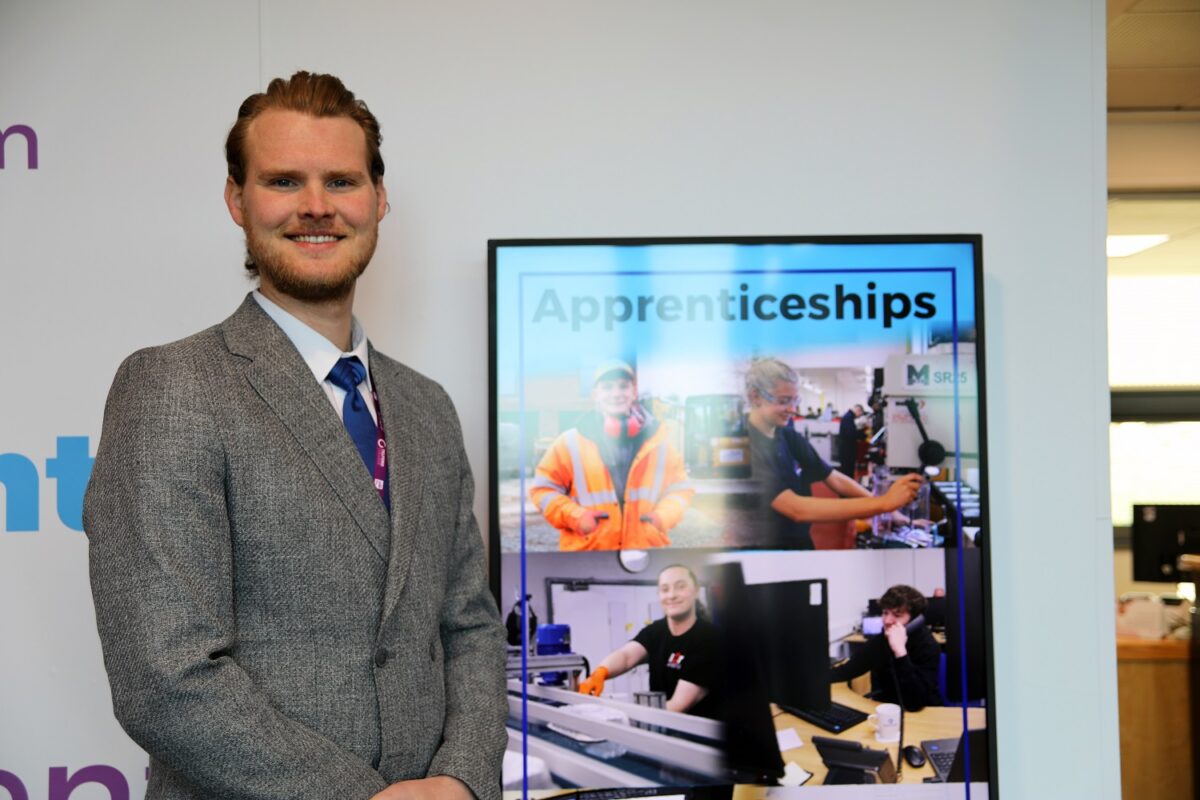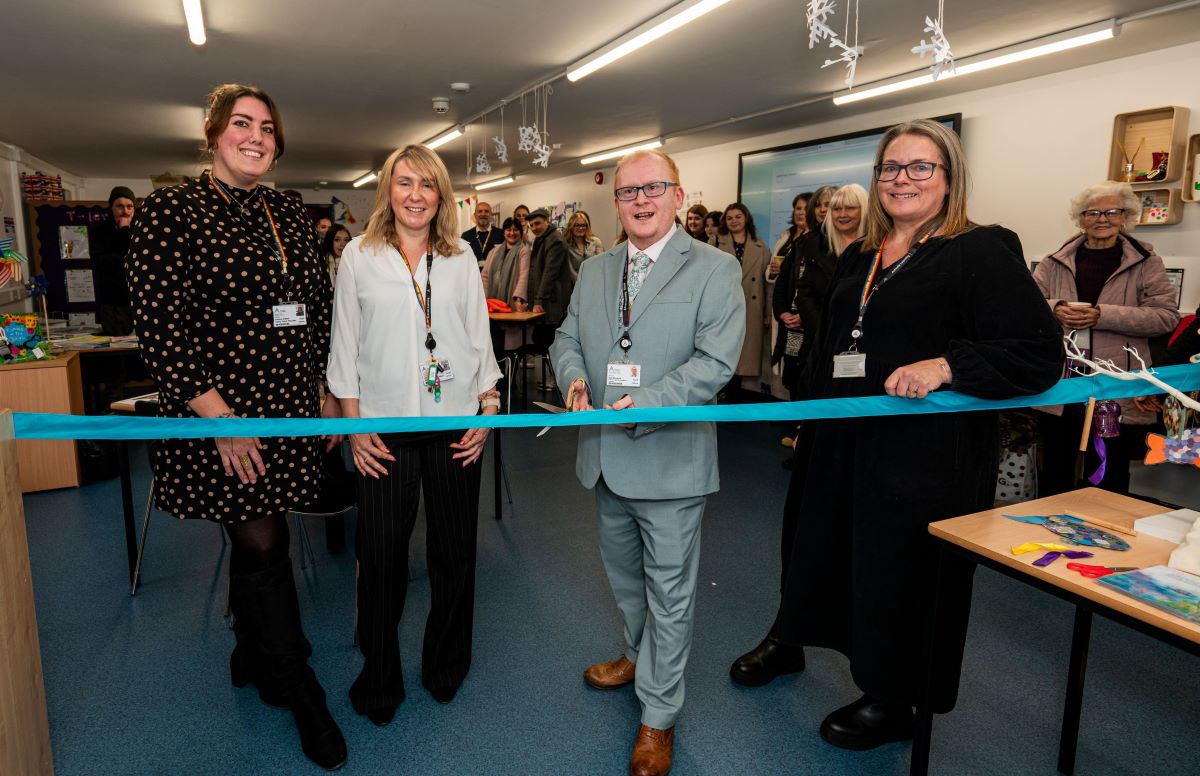Employability: What it is, what it is not, and what really matters in both FE and HE?

The first in a series of articles “Employability: What it is, what it is not, and what really matters in both FE and HE?” delves into the complex and often misunderstood nature of employability in the UK’s Further and Higher Education sectors. Encouraging leaders and practitioners to explore how a focus on more holistic development, including the embedding of a focus on personal qualities like self-efficacy, resilience and emotional intelligence into the curriculum and beyond, can better prepare learners for lifelong success. Discover the true essence of employability and its potential to transform educational practices with opportunities to learn from both sectors.
Employability is a pivotal yet often misconstrued concept
In the UK’s dynamic landscape of Further Education (FE) and Higher Education (HE), employability is a pivotal yet often misconstrued concept. While it is commonly seen as a set of skills leading to employment, this definition fails to capture employability’s complex, multifaceted nature. This article, drawing from extensive research and practical insights, particularly in the context of HE, aims to demystify the concept of employability, its true essence, and its potential to influence educational outcomes and inspection frameworks such as OFSTED.
Understanding Employability: A More Holistic Perspective
My research for my PhD and subsequent practice in HE has made it abundantly clear to me that employability is more than just concerned with job-specific skills. Employability encompasses a broader range of personal qualities and capabilities, including attitudes and behaviours and the ability to reflect effectively and adapt in various contexts over time. This understanding has practical implications for FE and HE educators, policymakers, and stakeholders. Seminal work by Dacre Pool and Sewell (2007) and Knight and Yorke (2006) further supports the importance of such areas, including emotional intelligence, self-efficacy, resilience, lifelong and lifewide learning, which are all essential considerations for any practical or strategic approach to learning for employability in the future. These aspects of learning also happen to be essential features of any effective approach intended to support learner retention, progression, attainment, and mental health and well-being. This takes us well beyond simply focusing on early employment after graduating and creates the potential to develop a more robust and holistic approach that will equip learners for employment and much more when viewed through these integrated lenses. In this way a more holistic approach to employability is the key to unlocking the full potential of our learners.
In FE and HE, however, there commonly seems to be a generic focus on employability as a linear path involving career education, work experience and collecting skills for employment. This is evident in how the government frames employability, also seen within OFSTED’s inspection criteria and in the various league tables published in the media, all of which emphasise recent employment outcomes over the more holistic development of the learner. OFSTED, for example, seems to confine attitude and behaviours to being polite, punctual and wearing lanyards. Whilst all important, this narrow focus risks neglecting the broader value of attitudes and behaviours developed through learning in the classroom and beyond, which are equally crucial for a learner’s long-term success. Recognising these limitations and striving for a more comprehensive understanding of employability is essential.
Whilst this skills-centric view is undoubtedly part of the equation, it is crucial to remember that it is just a part. By embracing a more comprehensive approach to learning for employability, we can ensure that our learners are equipped with the knowledge and technical skills required by employers and the attitudes and behaviours they need to thrive in the workplace and, crucially, beyond.
What Employability Is not
As highlighted above, employability is not merely concerned with a checklist of skills for employment, engaging with the Careers Service or simply gaining workplace experience. We must move away from framing this work as being centred simply on what we do and physically offer for our learners, shifting the focus to why exactly we are doing these things and thinking about the desired outcomes before the delivery method and, crucially, making all this explicit to the learners so they may better understand the value of engaging in certain activities on and off campus. These desired outcomes should be a dynamic combination of knowledge, skills, attitudes, and behaviours; these collectively are what matters to enable individuals to navigate and potentially thrive in various professional and personal contexts.
The more traditional view equates employability with career services supporting job readiness and the curriculum developing specific technical skills for a job, which is insufficient and potentially misleading. Such a narrow perspective fails to recognise the importance of other critical factors for success, such as resilience, self-efficacy, adaptability, critical thinking, and the openness to learn and relearn as the job market evolves and the world changes.
Furthermore, employability should not be conflated with employment. While securing employment is a tangible outcome of employability, it is not the sole indicator. Employability is a lifelong and lifewide concept that prepares students not solely for their first job. Instead, it should help prepare them to at least embark on the journey to achieving a sustainable, fulfilling career that may include multiple job changes, self-employment, and continuous learning. All of this work contributes to shaping the type of people they become and supporting the development of both their self and professional identity, both are crucially important to supporting learner retention and engagement throughout their journeys in education.
The misconception that employability equals immediate job readiness can limit institutions’ potential to nurture well-rounded individuals and crucially miss out on immediate, more comprehensive benefits to several other strategic agendas, as highlighted. A more comprehensive, broader, and nuanced definition, including personal, academic, and career development through lifelong and lifewide learning, will further enrich our learners’ educational experiences, aspirations and eventual outcomes and support multiple institutional strategic agendas across both sectors.
What Matters for Employability
- Reframing our thinking to the more holistic development of our learners: Effective learning for employability strategies should focus on developing the whole person and be positioned as a whole college or university responsibility, not solely the responsibility of our Careers and Employability Services, which typically have limited resources. This shift involves integrating learning opportunities across the curriculum and beyond, which recognise and help foster capabilities such as emotional intelligence, resilience, and reflective thinking. These personal qualities will enable learners to adapt to various job roles and industry changes over time, and they are some of the most sustainable learning outcomes we need to focus more on. With the explosion of AI and technological developments, the value of knowledge and memorisation is changing, whilst what it is to be human will only become more critical as the world continues to develop. In FE and HE, this work to effectively support employability can be integrated across the curriculum and beyond through activities promoting self-awareness and personal growth. This should be contextualised through practical activities either on campus or in the workplace, supporting learners to recognise the value of these experiences beyond knowledge, exams and grades, and in this way, ensuring learners are better prepared for both professional and personal challenges that they are sure to face.
- Reflective Practice: Encouraging learners to engage in transformative reflective practice over time (reflective practice with purpose, clarity and direction) helps them understand their learning processes, strengths, and areas for growth. As highlighted in my research, the supporting body of literature and my practice within HE, effective reflective practice is critical for continuous personal, academic and professional development. FE and HE institutions should incorporate structured, progressive and developmental reflective exercises across all their provision and levels of study, integrating this into their teaching methods, allowing learners to assess their experiences critically and repeatedly over time, more fully recognising the value they are gaining, developing a deeper understanding of their capabilities and opportunities for further growth in the future.
- Lifelong and Lifewide Learning: Learning and relearning are paramount in today’s fast-paced, technology-driven world. Lifelong learning should be a cornerstone of all learning for employability frameworks in FE and HE, supporting learners in developing the mindset and related practical tools to adapt to new challenges and opportunities throughout their careers and lives beyond the workplace. By promoting a culture of continuous improvement and curiosity, FE and HE institutions can help learners stay relevant in an ever-changing job market. The lesser-known relation to lifelong learning, lifewide learning (Jackson, 2012), is equally important in this space for both the learners and tutors. Recognising the value of learning happening simultaneously across multiple spaces at any given time in our lives is invaluable when reflecting on opportunities to develop who we are as individuals. We learn beyond the classroom through our jobs, playing sports or music, volunteering, caring for family, and daily interactions with others. This is an invaluable concept to highlight here, as it serves to reassure those who are anti-employability and who believe the academic content of the curriculum must be preserved at all costs, with no space for any new or additional areas of learning. By recognising and explaining the concept of lifewide learning before asking learners the right questions at the right time, we can ensure that they can better recognise and articulate the value of learning they are gaining across all aspects of their lives. Again, this is a more holistic view of learning and education. In a metrics-obsessed world, we have sharpened the focus too much on what is convenient to measure, which dangerously ignores the equal importance of learning as human beings and how we conduct ourselves and engage with others daily, both in work and life, more widely.
- Integrated Curriculum: Embedding learning for employability across the curriculum involves integrating social and emotional learning with practical experiences and ensuring all learners experience quality career advice and guidance. This approach ensures that students acquire theoretical knowledge and understand its application in real-world contexts. Models like the Employability Redefined Taxonomy (Cole and Eade, 2020, cited in Cole and Coulson 2022), developed from my research, provide scaffolding and a structured way to embed these elements into any curriculum, in any subject area, at a course or programme level and crucially at the individual learner level. Any institution could adopt similar frameworks to create consistency at the institutional level whilst ensuring flexibility at a course and individual learner level, creating a cohesive learning experience that aligns with industry needs and learner aspirations.
Opportunities for mutual learning and real levelling up
There is a clear opportunity here to actively improve sharing current practices in FE and HE, taking into account the comprehensive understanding of learning for employability in both sectors and supported by a body of research over the last fifteen years and more. HE can learn much from FE in their daily practices to support learners for employment, and FE can undoubtedly learn from HE’s experiences too. This is very much a two-way learning opportunity for both sectors.
For example, OFSTED inspections and Association of Colleges (AOC) guidelines could expand their criteria to include more joined-up and holistic development, reflective practice, lifelong and lifewide learning measures. This would align more closely with the realities of the modern job market and better prepare learners for sustainable careers and the challenges of daily life.
Drawing from my experience as an FE Governor and the Skill Link at Tyne Coast College, I can clearly see the opportunities for mutual learning. By adopting a more nuanced understanding of employability, FE and HE institutions would be better placed to create learning environments that support students in becoming well-rounded, adaptable, and reflective individuals who crucially have choices after graduating. This approach enhances their immediate job prospects and equips them with the knowledge, skills, and qualities necessary to embark on the journey towards long-term success in a complex and ever-changing world.
Practical Steps for Institutions
To effectively implement a holistic approach to learning for employability, FE and HE leaders should consider the following strategies:
- Language: The language used around employability is crucial for institutions as it shapes the perceptions and strategies of all stakeholders involved. A narrow, skills-focused discourse can lead to a superficial understanding of employability and limit the potential for more holistic student development. By broadening this language to include a more considered and research-informed understanding, institutions may better support lifelong and lifewide learning, ultimately preparing learners for diverse and evolving career and life landscapes. This shift will enhance learner success and align educational outcomes with broader social and economic goals; without this, the government’s fixation on the vague umbrella term of skills alone and the drive around levelling up will ultimately have limited impact in the long term.
- Curriculum Design: Integrate learning for employability across the curriculum and in all subjects, moving away from a more restrictive stand-alone module or unit approach. This can be achieved by designing modules and units that combine theoretical knowledge with practical skills and, crucially, social and emotional learning. Then, we need to map how each unit or module contributes to and supports the overall development of the learner in these specific aspects of learning across the duration of the course and by the time they leave us. This work clearly needs to consider the place of Professional Bodies and existing Occupational Standards, which already specify the importance of knowledge, skills and behaviours. My question to everyone reading this is how effectively we do the behaviours part. Are the behaviours positioned last out of the three aspects of learning, with knowledge and technical skills taking centre stage? Are we confident this work to address behaviours is more than a tick-box exercise? Compared to the body of research, are these the right behaviours, or are there others we should consider? Could we do better?
- Partnerships with Industry: Continue to develop strong links with local businesses and industry partners to ensure win-win relationships and a curriculum that remains relevant and current with job market demands. These partners can then highlight what outcomes regarding social and emotional learning are also most important to them, moving us beyond the oversimplified narrative of skills for the job. This messaging from employers and professional bodies will only provide learners and tutors with evidence of the importance of a ‘broader and more balanced curriculum’.
- Professional Development for Staff: Invest in the professional development of teaching staff to ensure they are equipped with the knowledge, self-confidence/efficacy, and skills to plan, approach and offer learning for employability with a much more holistic understanding of the desired outcomes from the very outset.
- Integrating Student Support Services: Enhance the role and value of support services that offer crucial career guidance, mental health and wellbeing support, and personal development opportunities. The synergies across these teams, such as student identity, reflective practice, self-efficacy, and resilience, must be recognised and any economies of scale maximised, avoiding any possible duplication and maximising the impact with the resources we have. Critically reflect on whether these teams are resourced to a level where they can support all students through timetabled sessions and not where they rely on all learners to actively engage in their own time and of their own accord. This would create a more integrated and comprehensive support system to help learners navigate their educational journey and prepare them for future challenges. However, it is fully recognised how underfunded FE is and that this kind of provision would be difficult under the current funding regime. Combined with the additional needs of many learners today, if levelling up is the Government’s ambition, then budgets in FE must be increased.
- Feedback and Evaluation: Regularly assess your approach to learning for employability based on feedback from learners, employers, academic staff, and, crucially, your results. These results should be quantitative and qualitative to truly understand the nature of the impact. This ensures that the approach remains effective and responsive to changing needs.
- Quality Assurance: Developing and adopting an institutional research-informed and flexible framework, supported by all senior leaders and embedded into the curriculum design, validation, revalidation, and review processes, will support the development of a strategic, institutional-level approach that is future-facing and will help raise standards across all provisions.
Conclusion
Employability is a multifaceted concept that extends beyond immediate job readiness. By embracing a more holistic view and developing an approach that includes personal development, reflective practice, and lifelong and lifewide learning at its heart, both FE and HE institutions can better prepare learners for the complexities of the modern job market and changing world. This enhances their employment prospects and supports their overall growth as individuals. Through collaboration, continuous improvement, and a commitment to comprehensive education, together with adequate Government funding, FE and HE should work together to redefine employability to benefit all learners in the future.
By Dr Doug Cole, Managing Director, Education for Employability











Responses